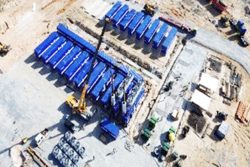Dear Editor,
The National Forest Action Plan proposed for 2018 reads well as an academic document. Regrettably it does not deal in depth with the problems that face the utilization of all aspects of the forested area.
Regarding the utilization of timber extraction from our forest: This has been happening we are told for over two hundred years. About ninety-nine years ago the colonial government established a Forestry Department to manage a designated State Forest. This department, after several years, was turned into the Forestry Commission.
The Forestry Department established simple criteria to ensure “sustainability”, that was, work in a defined area (Block system), and not cut anything smaller than twelve inches at breast height.
Various studies were done over the years by Fanshaw/Welch/EC Clarke and finally Tropenbos.
Fanshaw in the thirties gave the industry a management inventory. Welch, did a forest valuation survey in 1964.
EC Clarke did a study of a worked over 10 acre plot in 1954 with a view to seeing what could be done to enhance the growth of greenheart. Clarke’s work involved checking what greenheart remained in the 10 acres worked over area. Of interest there were over 5000 saplings and seedlings, up to 2 inches in diameter with only 94 stumps of trees removed.
Finally, there was Tropenbos.
Tropenbos is an organization funded through the University of Utrecht in Holland to study the tropical forests in order to preserve them. They sent some university students to Guyana and they established their camp at Mabura Hill, the then government-owned logging and sawmilling operation. The Forest Products Association of Guyana requested of Tropenbos that they study the forest in the Bartica Triangle, an area in which private sector companies and the Colonial Development Cooperation (CDC) had worked extensively for over 50 to 60 years.
This request was implemented by way of an inventory done in 1999 when Tropenbos were scheduled to leave Guyana in 2000. In fact, they departed a year or two later (2003?) An inventory gives the facts of what is there. It can be checked on the ground by interested parties, hence cannot be falsified in anyway regardless of personal opinion or bias. The facts that Tropenbos found were as follows: –
comparison with internationally accepted standards, such as FSC or Smartwood, suggests that the long -term sustainability of Greenheart harvesting in the Bartica Triangle is low, while other criteria of sustainability appear to be met. Greenheart itself does not appear to be threatened with extinction yet.
More specifically, there are a number of important conclusions that can be drawn from the results:
1. The extraction of Greenheart (c. rodiei) in Central Guyana mainly led to a population decline of the target species itself.
2. Even after a decline of 63%, Greenheart still ranks third in abundance.
3. Species composition has essentially remained the same.
4. There has been no change in relative contribution of dispersal types in the tree community.
5. Endemics (except Greenheart) have not changed in abundance.
6. There are no detectable changes in quantitative measures of species diversity.
Why has such a perfect result been ignored? It is a fact that with a simple 12 inch rule our forest is intact. However, Tropenbos is no friend of the industry, hence they continue to offer a discussion trying to explain away why these good results were achieved.
This is the danger the producers face. They have been subjected to governance by ‘experts’ in environmental forestry who are hired by our Commission with ‘grant money’. These experts do not study the work done in the past, but apply the sustainable work done elsewhere on better soils and less dense species.
Frankly it may be considered that in any worked over concession, any new lease should exclude the felling of greenheart. This way it should ensure a second crop of greenheart in 200 (?) years, may be possible. Yet the forest is a dynamic entity and there is a fear that natural developments may affect the continuation of a species.
It is said the Forestry Commission is considering the introduction of a Stumpage Fee. This type of payment we believe can only apply to plantation forests where the roads are made and all the trees are marketable. Such fees are generally utilized for softwood forest plantations. In Guyana’s case if a new concession is granted the concessioner has to build all the infrastructure.
Trying to read the ‘Plan’ gives the impression that it is nothing but a collection of ideas and theories without any recognition of the practical difficulties. A plan is useless if it does not take into consideration the area or object for which it is being made.
Yours faithfully,
John Willems









